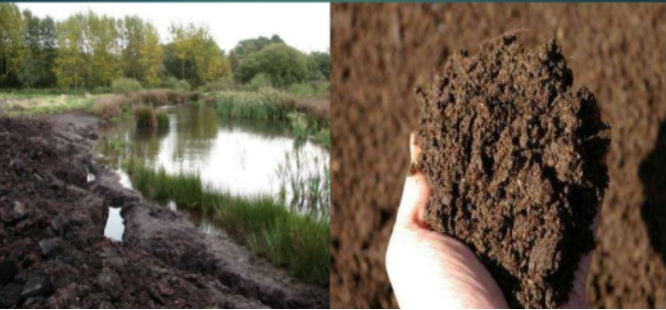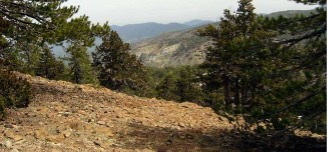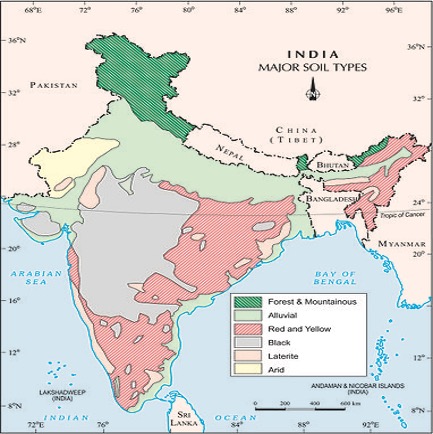🇮🇳 Soils of India
Classification of soils of India
- The Indian Council of Agricultural Research (ICAR) set up an All India Soil Survey Committee in 1953, which divided the Indian soils into
eightmajor groups. - Area: 329 mha
1. Alluvial soils
Soil formation
- Parent material: River alluviums from erosion products of rivers, coastal alluviums from coastal sands; and deltaic alluviums from Heterogeneous sediments.
- Deposited in flood Plains by transportation in streams and rivers.
- Formed mainly from
Entisolsother Inceptisols and Alfisol.
Special Feature
- Largest soil group with occupying about
143 mha(43% of total) NABARD 2018 (highest area in UP followed by Haryana, Delhi, Rajasthan and western Gujarat). - It is geographically two types:
- Khaddar or newely formed alluvial, more sandy and light in colour and less kankar nodules. UPPSC 2021
- Bhangar or older more clayey soils and full of kankar nodules.
Constraints
- Alluvial soils are azonal soil (no horizon).
- The alluvial soils are generally rich in potassium but poor in phosphorous and OM.
Potentialities
- River alluviums and deltaic alluviums are best agricultural soils (highly fertile). Wheat, rice, sugarcane and other crops can be grown well.
Management
- Judicious use of fertilizers. Providing drainage facilities
2. Black soils
- Formed mainly from
vertisol soil orderRRB-SO-19 also contain inceptisol and entisol. - Black soil occupied about
15 %of total area. - In
Maharashtrasoil derived fromDeccan trapis calledRegurorblack cotton soils. - Texture: mostly high clay content. (Due this it has
high water holding capacitybut poor drainage capacity) FCI AGM 2021 NABARD 2018 - Mature soil. lt is highly argillaceous, very fine grained and dark soil and contains a high proportion of Ca and Mg carbonates. It is rich in lime, magnesia and alumina, moderate potash and poor in P2O5, N and O.M., rich in
montmorilloniteand beidelitic group of clay minerals, high CEC 40-60 me/100 g of soil. These soils hashighest CEC. - Occurrence:
Maharashtra(Highest), West M.P., parts of Andhra Pradesh, Gujarat and some parts of T.N. - High water retaining capacity.
Swellsand will become sticky when wet and shrink when dried.Self-ploughingis a characteristic of the black soil as it develops widecrackswhen dried. NABARD Pre 2020- Rich in: Iron, lime, calcium, potassium, aluminum and magnesium.
- Deficient in: Nitrogen, Phosphorous and organic matter.
- Colour: Deep black to light black.
- Best soil for Dry land agriculture:
Black soil.
Potentialities
- Inherently fertile, suitable for dry farming, under rainfed conditions cotton and millets, under irrigation rice, sugarcane etc., can be grown
Management
- ICRISAT – Dry season / pre-monsoon sowing, BBF
- In Chhattisgarh the local name of black soil is Kanhar soil. It is found in plain and valley areas.
3. Red soils
- Formed mainly by
Alfisols soil order; also contain Ultisol & Inceptisol. - Red soil occupied about 18.5% of total area.
- Largest area in
Tamil Nadufollowed by Karnataka, Goa, Daman and Diu, South East Maharashtra, East Andhra, M.P., Orissa and Chhotanagpur, Santhal Parganas, Mirzapur, Jhansi, Hamirpur. - Red soils have
high P fixation capacitydue to presence of kaolinite clay mineral. - Such soils formed from ancient crystalline and metamorphic rocks, colour due to wide diffusion of iron rather than to a high content, poor in N, P2O5 and humus, potash; Some red soils are of lateritic origin and of a quite different nature, rich in Kaolinitic type of minerals.
- Highest amount of sand is found in red soils.
Canker nodulesare found mostly in Red soils.- In the light and frequent rains of south west monsoon, red soils permit sowing being done earlier than other soils hence called
early soils. - The black soils are not much benefited by light showers in the early season due to its lower permeability. Thus, such black soils are moistened sufficiently in the later period of season-called ‘late soil’.
Potentialities
- Under good management practices, these soils are good for agricultural, horticultural and plantation crops.
- Best soil suitable for Agriculture also called omnibus group of soil.
Management
- Application of organic materials and proper fertilization.
4. Laterite soils
- Name from Latin word ‘Later’ which means
Brick. - Formed mainly from
ultisols and oxisolssoil groups. Kaoliniteis dominated silicate clay.- Mainly found on hills of Kerala, Karnataka, Orissa, Assam and coastal area of Goa, Maharashtra.
- Become so soft when wet and so hard when dried.
- Found in the areas having
heavy rainfall and high temperaturealternating. - Formed as a result of
leaching(Maximum) takes place. - Lime and silica will be leached away from the soil.
- Good physical condition due to presence of hydrous oxide of Fe & Al.
Shifting cultivationadopted.- Organic matters of the soil will be removed fast by the bacteria as it is high temperature and humus will be taken quickly by the trees and other plants. Thus, humus content is low.
- Rich in: Iron and Aluminum
- Deficient in: Nitrogen, Potash, Lime, Humus
- Colour: Red colour due to iron oxide.
- Rice, Ragi, Sugarcane and Cashew nuts are cultivated mainly.
- Suitable for plantation crop and rice cultivation.
5. Desert / Arid soil
- Soil order:
Aridisol&Entisol. - Occurrence: Seen under Arid and Semi-Arid conditions: West Rajasthan, Haryana, Punjab, lying between Indus river and Aravali range.
- The desert sand is composed of quartz but feldspar and hornblende grains also occur with a fair proportion of calcareous grains. Deposited mainly by wind activities.
- High salt content.
- Lack of moisture and Humus.
- Kankar or Impure Calcium carbonate content is high which restricts the infiltration of water.
- Nitrogen is insufficient and Phosphate is normal.
- Texture: Sandy
- Colour: Red to Brown.
6. Peaty / marshy soil

- Peaty soils are found in the areas of heavy rainfall and high humidity, where there is a good growth of vegetation. Thus, large quantity of dead organic matter accumulates in these areas, and this gives a rich humus and organic matter accumulates in these areas.
- Organic matter in these soils may go even up to 40 – 50 per cent.
- These soils are normally heavy and black in colour. At many places, they are alkaline also.
- These soils occur widely in the northern part of Bihar, southern part of Uttrakhand and costal area of West Bengal, Orissa and Tamil Nadu.
7. Forest & Mountain soils

- Forest area where sufficient rainfall is available.
- Humus content is less and thus the soil is acidic.
8. Saline and alkaline soils
- Saline soils or Usara Soils contain a larger proportion of sodium, potassium and magnesium, and thus, they are infertile, and do not support any vegetative growth.
- They have more salts, largely because of dry climate and poor drainage.
- They occur in arid and semi-arid regions, and in waterlogged and swampy areas.

- The Indian Council of Agricultural Research (ICAR) set up an All India Soil Survey Committee in 1953, which divided the Indian soils into
eightmajor groups. - Area: 329 mha
1. Alluvial soils
Soil formation
- Parent material: River alluviums from erosion products of rivers, coastal alluviums from coastal sands; and deltaic alluviums from Heterogeneous sediments.
- Deposited in flood Plains by transportation in streams and rivers.
- Formed mainly from
Entisolsother Inceptisols and Alfisol.
Special Feature
- Largest soil group with occupying about
143 mha(43% of total) NABARD 2018 (highest area in UP followed by Haryana, Delhi, Rajasthan and western Gujarat). - It is geographically two types:
- Khaddar or newely formed alluvial, more sandy and light in colour and less kankar nodules. UPPSC 2021 …
Become Successful With AgriDots
Learn the essential skills for getting a seat in the Exam with
🦄 You are a pro member!
Only use this page if purchasing a gift or enterprise account
Plan
Rs
- Unlimited access to PRO courses
- Quizzes with hand-picked meme prizes
- Invite to private Discord chat
- Free Sticker emailed
Lifetime
Rs
1,499
once
- All PRO-tier benefits
- Single payment, lifetime access
- 4,200 bonus xp points
- Next Level
T-shirt shipped worldwide

Yo! You just found a 20% discount using 👉 EASTEREGG

High-quality fitted cotton shirt produced by Next Level Apparel